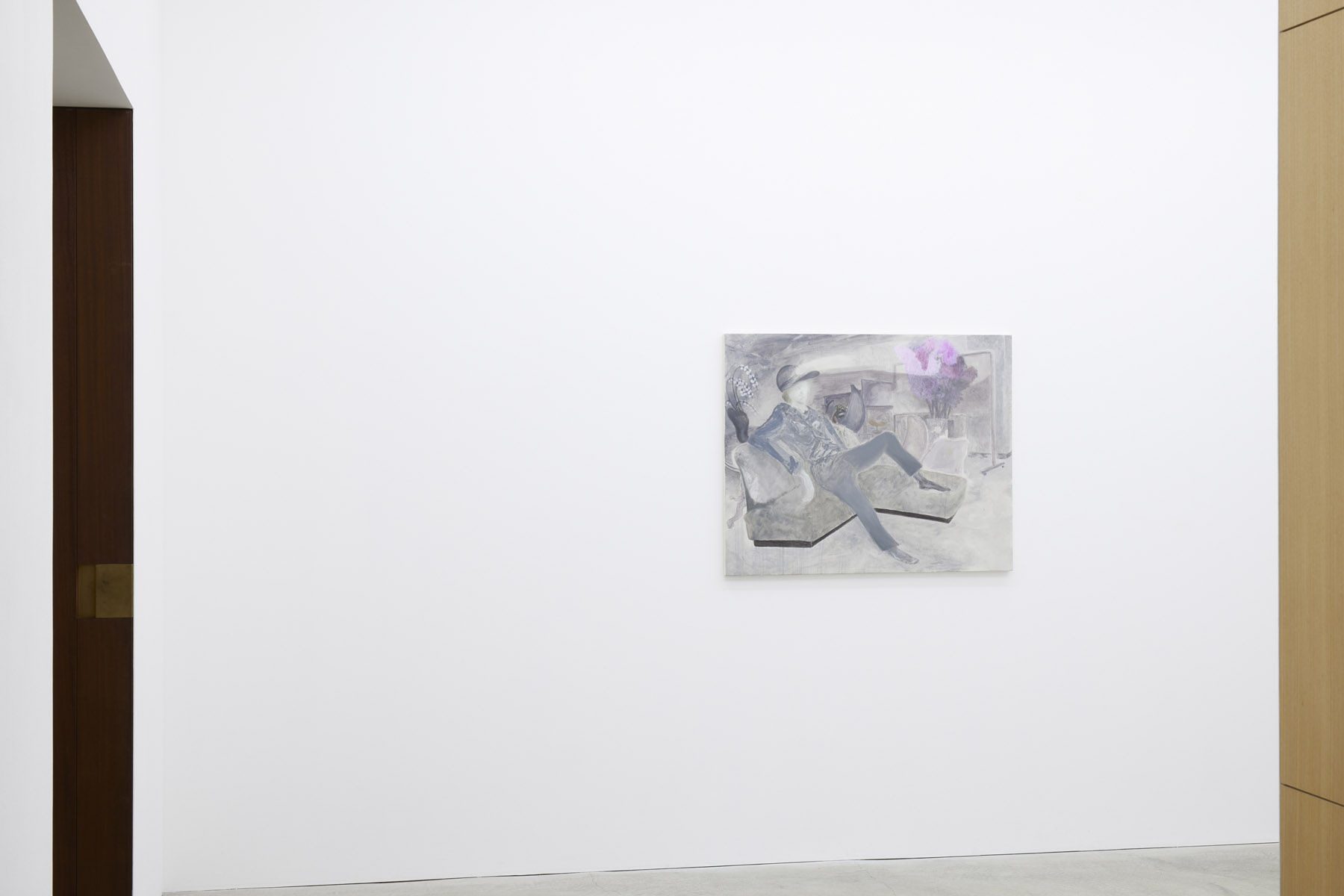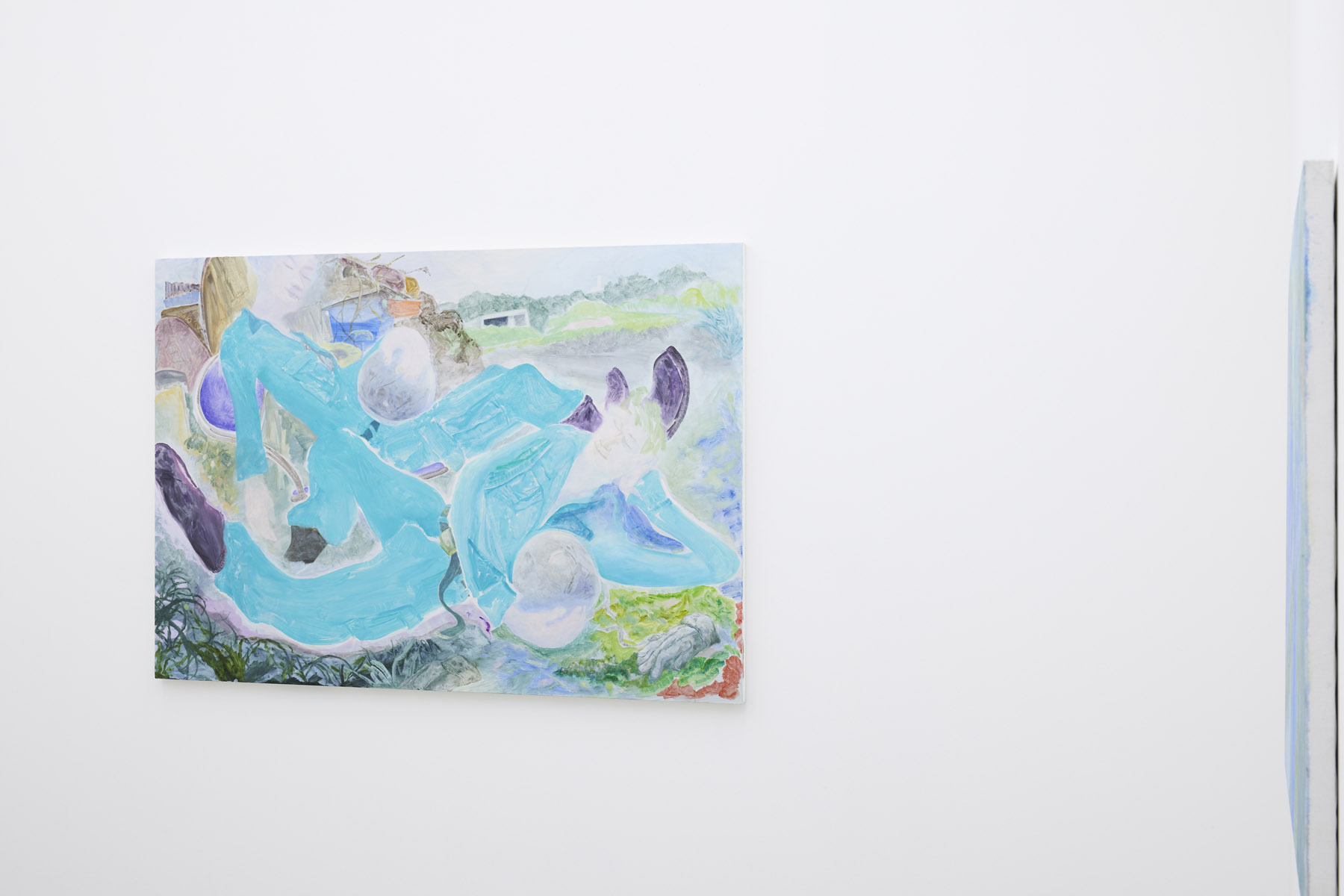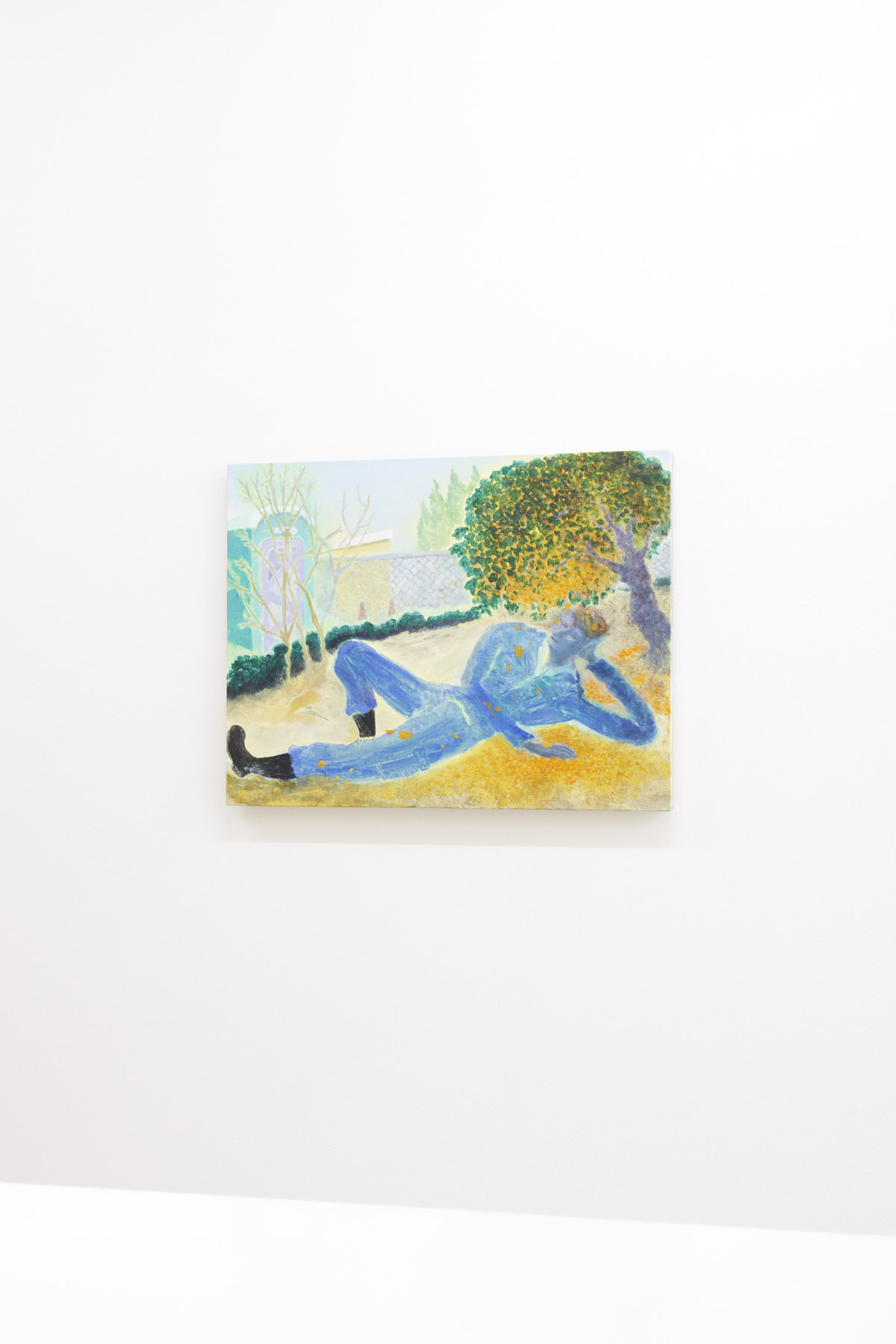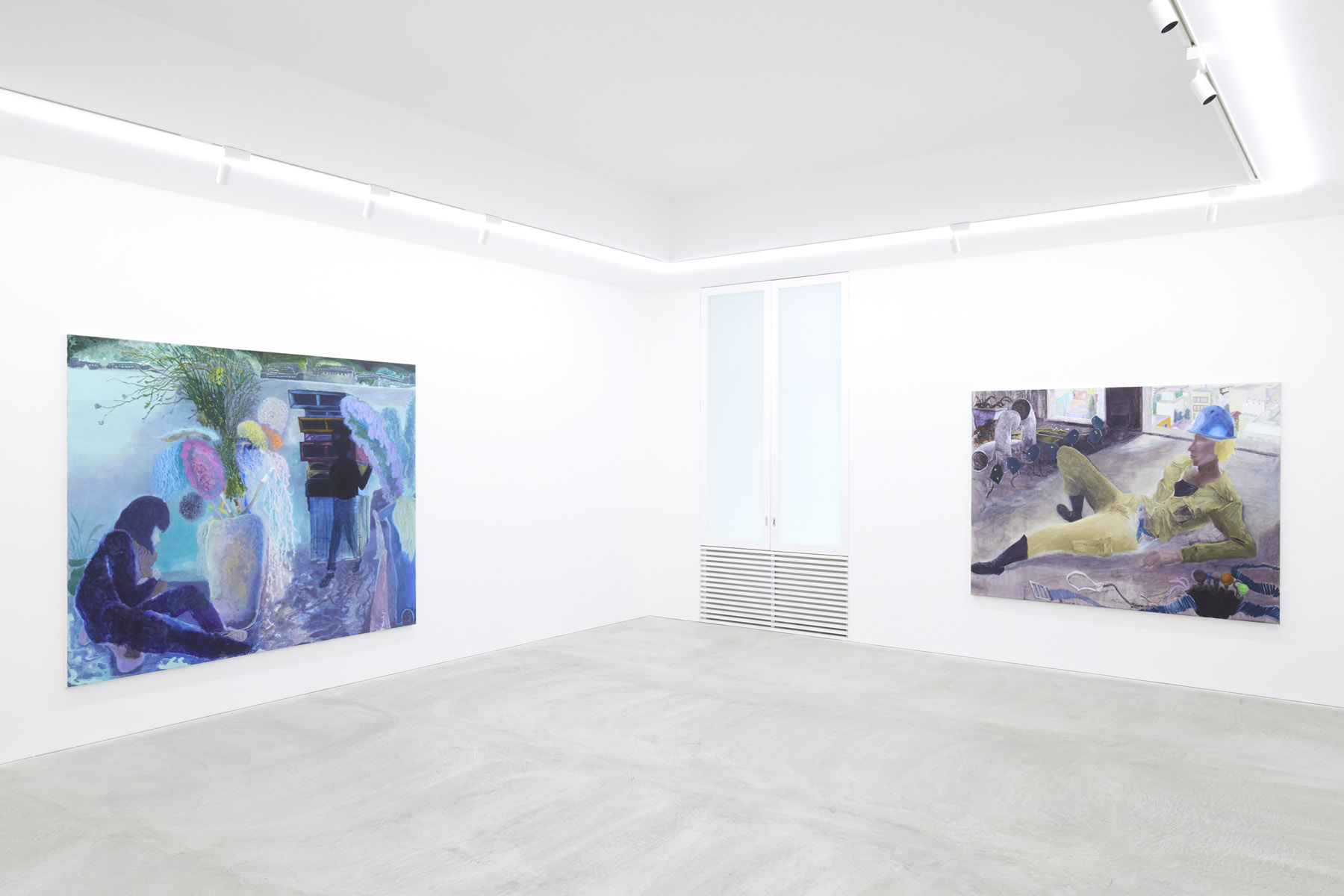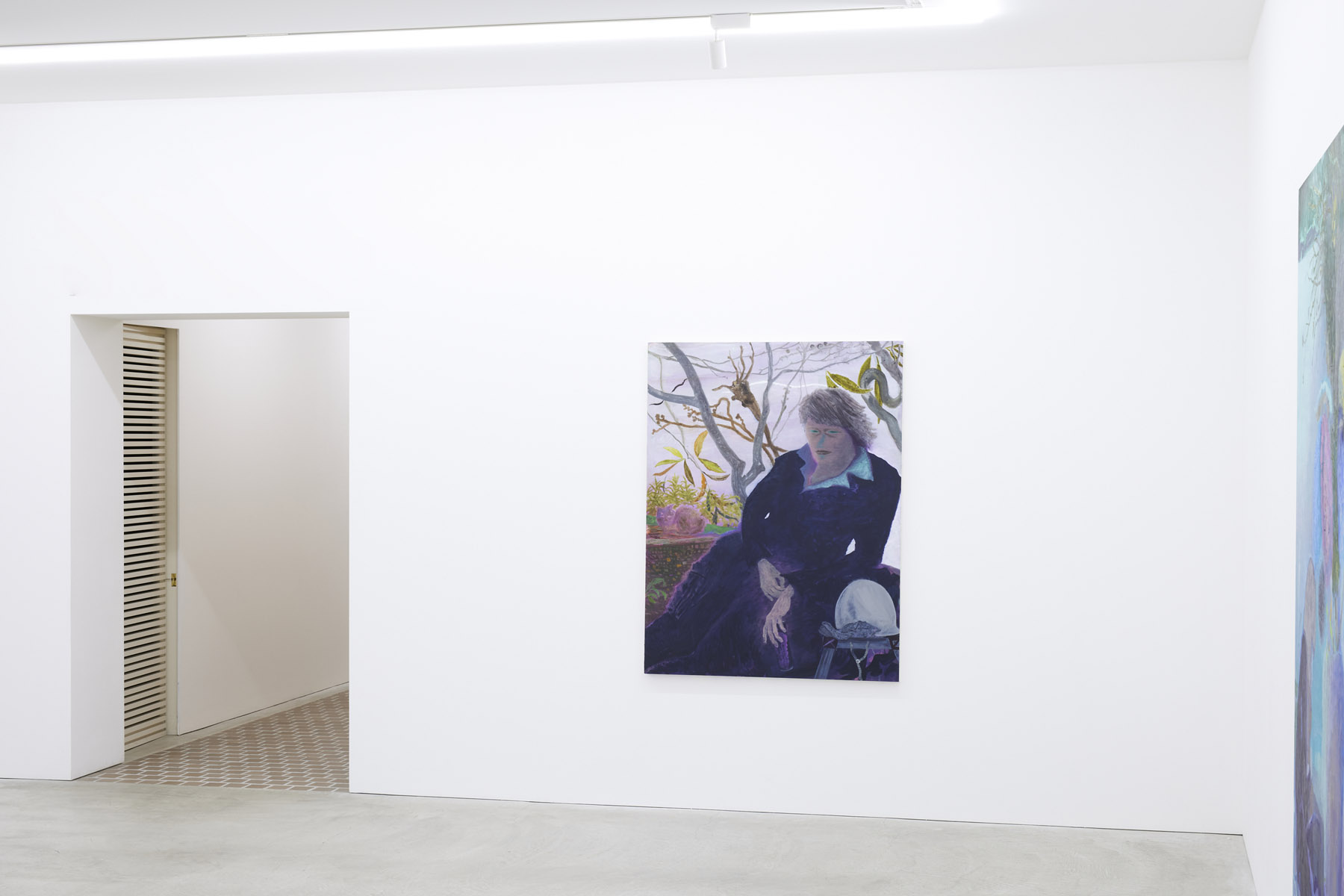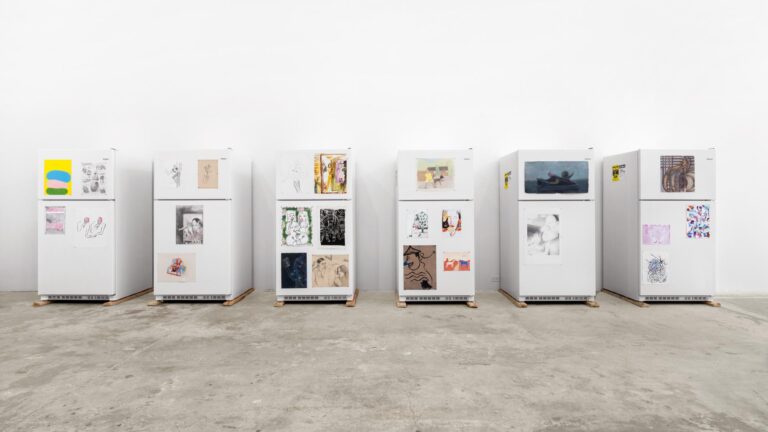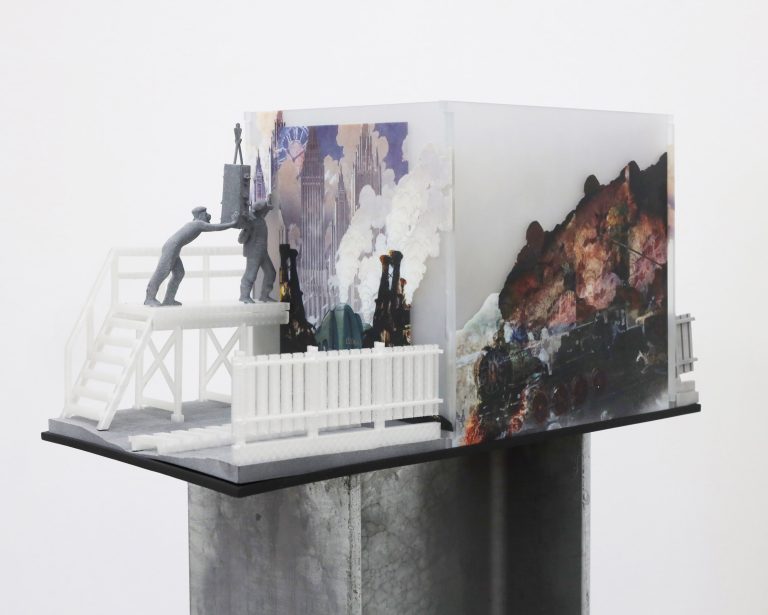Artist: Daisuke Fukunaga
Exhibition title: Labor
Venue: Tomio Koyama Gallery, Tokyo, Japan
Date: November 7 – December 5, 2020
Photography: images copyright and courtesy of the artist and Tomio Koyama Gallery
Tomio Koyama Gallery is pleased to present “Labor,” an exhibition of works by Daisuke Fukunaga. The exhibition marks the artist’s sixth solo presentation with the gallery since his previous showing five years ago, and introduces a selection of new paintings.
Fukunaga depicts things that although familiar, are often forgotten or tend to go unnoticed due to their sheer ordinariness. Such include mops, tires, wheels, and motorbike seats that he comes across during his part-time job or while taking a casual stroll. Referring to them as “indescribable sculptures,” these objects are liberated from their original purpose and functions due to changes in the environment in which they are found, the passage of time, and the amount of light that shines upon them. As a result, their material presence as “objects” are highlighted, presenting an animate and ever-changing disposition day by day. The artist creates paintings as if to document the emotions, mood, and sensations that he experiences when encountering these objects.
In his previous exhibition in 2015, Fukunaga described his perspective as “the eyes of a stray cat wondering aimlessly and staring into something.”
Art critic Noi Sawaragi has remarked on Fukunaga’s paintings as follows:
“This transmutable quality suggests a distant source of Fukunaga’s art in the work of Yuichi Takahashi. Yuichi’s paintings, done at the beginning of the Meiji era, have a stronger appeal to the viewer today than those of later artists such as Seiki Kuroda or Chu Asai because of his obsession for projecting (not transferring) onto the canvas an intense sensation of the awesomeness of “being there”, for whatever reason, not because of the particular techniques or methods he may have used.”
(Noi Sawaragi, “From Fried Tofu in a Kitchen to a Used Mop”, Daisuke Fukunaga exhibition catalogue, Tomio Koyama Gallery, 2008)
Also characteristic of his work is that these objects are depicted in a personified manner, as if they have acquired emotions, facial expressions, and personalities –their quiet presence evoking a certain dignity or even a sense of the sublime. The space inside the picture plane appears distorted like it is under the influence of some special magnetic field or force of gravity, and pale yet richly vivid colors of blue, yellow, green, purple, pink, and orange, which presumably differs significantly from the hues of the actual environment, are applied throughout. Consequently, a sense of fiction enters the picture plane on which realistic objects are supposedly painted, and thus a profoundly dense and distinct world captured from a micro-perspective dynamically unfolds beyond the contours of the large canvases.
The new works presented on this occasion are the first to deal with the subject of people since his solo exhibition held at the gallery in 2011. Upon realizing that “the array of images inspired by his own personal experiences also contain people,” Fukunaga depicts various “people at work” including himself that he witnessed in the several places where he had worked.
Fukunaga states as follows regarding the exhibition:
“People’s movements when working, correspond to their profession. However, it is interesting that basic human poses such as lying down or walking seem to reflect an individual’s personality even when they are engaged in labor. I find myself fascinated by the coexistence of personality as a social role, and personality as an individual. Needless to say, people have some kind of profession and are involved in some kind of labor. Of course, painting, and making a work of art can also be regarded as labor. One could say that someone is working even when they don’t seem to be producing anything at first glance. In that sense, I felt that labor as a motif harbored much possibility and freedom.”
The painted figures appear melancholic or enjoying a relaxing moment, yet each of the canvases are permeated by a fantastical world that seemingly delves into the depths of the minds and hearts of those depicted.
People have some kind of profession and are involved in some kind of work. Labor and living are inextricably connected, and Fukunaga’s works convey the fundamental vitality and presence of those at work. We invite viewers to embrace this opportunity to explore and engage with the artist’s latest oeuvre that serves to reflect his new challenge.
Objects depicted in Daisuke Fukunaga’s painting are something too ordinary for us to pay attention everyday – places or objects we have forgotten, such as a shabby vacant lot, a dark basement of the construction building without wiring, old cleaning tools like mops, tires, and wastes. With his “representationalism” approach, these objects seem to throw off its functional meanings attached to them and wriggle like animals, as if they had emotions and personalities.
Personified objects against the dramatic backgrounds in Fukunaga’s paintings evoke strongly and theatrically, emphasized by being depicted on large canvases. The senses of endless depth and presence as materials attract viewers.
Fukunaga Daisuke was born in Tokyo, in 1981. He graduated from the oil painting course of Tama Art University in 2004, lives and works in Tokyo, Japan. He has participated in group shows such as “AFTER THE REALITY 2” curated by Hiromi Yoshii (Daichi Projects, New York, 2008), “VOCA Exhibition 2009” (The Ueno Royal Museum), and “The Way of Painting” (Tokyo Opera City Art Gallery, 2014). Also as a member of the artist group MIHOKANNO, he participated in group exhibitions “Hello MIHOKANNO” (Tokyo Wonder Site Shibuya, Tokyo, 2009) and “GOOD NIGHT MIHOKANNO” (Akibatamabi 21, 3331 Arts Chiyoda, 2011). He won the first Kinutani Koji Award sponsored by the Mainichi Shimbun in 2009. At Tomio Koyama Gallery, Fukunaga has held solo exhibitions in 2006, 2008, 2011, 2013 and 2015.







